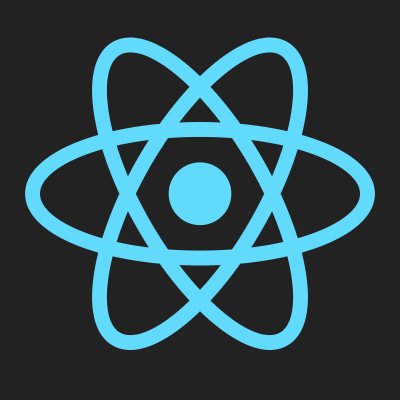Understanding the Product Design Process and Why It Matters
- himubuss2910
- Nov 23
- 4 min read
Creating a product that truly meets user needs and stands out in the market is no accident. It requires a clear, thoughtful process known as product design. This process shapes ideas into tangible solutions that solve problems, delight users, and succeed commercially. Understanding how product design works and why it matters can help businesses, designers, and anyone involved in product creation make better decisions and build better products.

Designer sketching product concepts on paper during early design phase
What Is Product Design?
Product design is the process of imagining, creating, and refining products to meet specific needs. It covers everything from the initial idea to the final product that reaches customers. This process combines creativity, technical knowledge, and user understanding to develop products that are useful, usable, and desirable.
Unlike just making something that works, product design focuses on the whole experience. It considers how the product looks, feels, functions, and fits into users’ lives. This holistic approach helps create products that solve real problems and provide value.
Key Stages of the Product Design Process
The product design process typically follows several stages. Each stage builds on the previous one, ensuring the product evolves thoughtfully and effectively.
1. Research and Discovery
This stage involves gathering information about users, market needs, and existing solutions. Designers ask questions like:
Who will use this product?
What problems do they face?
What solutions already exist?
What are the business goals?
Research methods include interviews, surveys, competitor analysis, and market studies. This step uncovers insights that guide the entire design process.
2. Defining the Problem
After research, the team clearly defines the problem to solve. This means focusing on the user’s needs and pain points rather than jumping to solutions. A well-defined problem statement helps keep the design focused and relevant.
For example, instead of saying “We want to build a new app,” a better problem statement would be “Busy parents need a simple way to organize family schedules on the go.”
3. Ideation and Concept Development
With a clear problem in mind, designers brainstorm ideas and explore possible solutions. This stage encourages creativity and open thinking. Sketches, wireframes, and rough prototypes help visualize concepts.
Teams often use techniques like mind mapping or storyboarding to generate and organize ideas. The goal is to find multiple ways to address the problem before selecting the best approach.
4. Prototyping
Prototypes are early models of the product that allow testing and feedback. They can be simple paper sketches or interactive digital versions. Prototyping helps identify design flaws and usability issues before investing in full development.
For example, a team designing a new kitchen gadget might create a 3D-printed prototype to test how it fits in users’ hands.
5. Testing and Validation
Testing involves real users interacting with the prototype to provide feedback. This step reveals what works well and what needs improvement. Designers observe users, collect data, and refine the product accordingly.
Validation ensures the product meets user needs and business goals. It reduces the risk of costly mistakes later in the process.
6. Final Design and Development
Once testing confirms the design, the team finalizes details like materials, colors, and technical specifications. The product moves into development or manufacturing. Designers collaborate closely with engineers and producers to ensure the final product matches the vision.
7. Launch and Post-Launch Evaluation
After launch, the product’s performance is monitored. User feedback, sales data, and market response help identify opportunities for improvement. Product design is often an ongoing process, with updates and new versions based on real-world use.
Why Product Design Matters
Product design is more than aesthetics or functionality. It directly impacts a product’s success and user satisfaction in several ways.
Solves Real Problems
Good product design starts with understanding users and their challenges. It creates solutions that address real needs, making products useful and relevant.
Enhances User Experience
Design shapes how users interact with a product. Thoughtful design makes products intuitive, enjoyable, and easy to use. This builds customer loyalty and positive word of mouth.
Saves Time and Money
Investing in design early reduces costly mistakes during development and after launch. Prototyping and testing catch issues before they become expensive problems.
Differentiates Products in the Market
In crowded markets, design can be a key factor that sets a product apart. Unique, well-designed products attract attention and build brand reputation.
Supports Business Goals
Design aligns products with business objectives like increasing sales, entering new markets, or improving customer retention. It connects user needs with company strategy.
Examples of Product Design Impact
Apple iPhone: Apple’s focus on sleek design, ease of use, and seamless integration transformed the smartphone market. The iPhone’s design made technology accessible and desirable to millions.
Dyson Vacuum Cleaners: Dyson’s innovative design solved common vacuum problems like loss of suction and heavy weight. Their products combine function with striking aesthetics.
Nest Thermostat: Nest redesigned the home thermostat to be smart, simple, and user-friendly. This product changed how people control home heating and cooling.
These examples show how product design can create value beyond just the product itself.
Tips for Effective Product Design
Start with users: Always keep user needs and context at the center.
Collaborate across teams: Involve designers, engineers, marketers, and users.
Test early and often: Use prototypes to gather feedback continuously.
Keep it simple: Avoid unnecessary complexity in design and features.
Be ready to iterate: Design is a process of refinement, not a one-time task.
Final Thoughts
Understanding the product design process helps create products that truly work for people and businesses. It guides teams from vague ideas to clear, tested solutions. Good design solves problems, improves experiences, and supports success in the market.








Comments